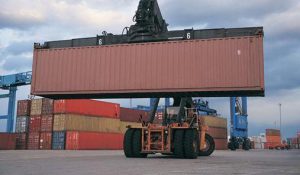 the way forward for the container industry?
the way forward for the container industry?
The first meeting of the Container Freight Derivatives Association (“CFDA”) was held in Shanghai on 14 September 2010. The CFDA is an independent organization for participants in the container freight derivatives market which, in its own words, has among its aims to “promote the trading of container freight derivatives” and to
“promote and develop the use of standard contracts [and] other ‘over the counter’ and exchange traded derivative products for container freight derivatives and related price risk management”.
Representatives of several of the major container ship lines attended the meeting, but at the moment they are cautious about becoming involved in a market which has been likened by the CEO of Maersk Line to a “casino”.
In this article we have considered the key features of this new market and why carriers are so cautious about becoming involved.
Forward freight agreements (“FFAs”) are commonplace and are routinely bought and sold by shippers and carriers on the Baltic Dry Index, their purpose being to hedge against the risk that a rise or fall in the spot rate might detrimentally affect the profit that parties expect to make from a voyage. It has been estimated that FFAs are currently worth approximately 40% of the physical market. Brokers have for some years been trying to create a similar hedging tool for the container shipping industry, but these efforts were hampered by an inability to decide on whether such a tool could or should be based on charter or freight rates.
Such efforts have eventually resulted in the Container Freight Swap Agreement (“CFSA”) developed by Clarkson Securities, a cash settled swap product made on a principal to principal basis, the first trade on which took place in January 2010. For the first time this allowed parties in the container market to fix a specified freight rate (USD per TEU or FEU) for forward positions without assuming any underlying risk. Contracts will usually be based on the CFSA standard, incorporating any amendments agreed between the principals. The swap is settled against the Shanghai Containerized Freight Index (“SCFI”), recently created by the Shanghai Shipping Exchange, by taking an average rate over a four-week period. The SCFI is based on freight data received from fifteen carriers and fifteen freight intermediaries, representatives of both having been chosen in order to create a neutral index, and covers fifteen routes in and out of Shanghai.
The market is still in its infancy, with volumes remaining small, although they have risen since the clearing houses, LCH. Clearnet of London and SGXAsia Clear of Singapore were authorized to clear trades. Clearing provides security to parties on both sides of a trade, as it ensures that they will be paid. The CEO of Clarkson Securities told the inaugural meeting of the CFDA that it is likely that the derivatives market will add up to 5% of the size of the physical market from Shanghai to Europe and North America by the end of 2011. This will not be achieved, however, without the liquidity provided by the participation of the major carriers, who are currently reluctant to buy into the market.
Derivatives in general received a bad press for their role in the recent global financial crisis, and this could only add to carriers’ natural, and perhaps understandable, caution when it comes to embracing any major change to an industry in which they have invested billions of dollars.
One of the arguments in favor of container freight derivatives is that because the price is set by the market, they could allow carriers more time to concentrate on the relationships with their customers. Carriers do not, however, see this disconnection from the price as being an advantage. It is, they say, simply a step towards becoming a commodity and this is not a direction in which container shipping should be heading. It is a market which is seen by its members as far less suited to futures trading than bulk shipping, as container shipping requires the negotiation of long-term contracts which contain deal-specific provisions other than price and volume, for example free use of containers and inland delivery. Such contracts are viewed as the best way to provide stability and a solution to rate instability. In contrast, it is feared that a container freight derivatives market could create increased price volatility and in fact destabilize the liner market.
Brokers are keen to assuage carriers’ fears, and have said that derivatives could in fact calm the wild price swings that have been seen in the last few years and which expose both carriers and their customers to unpredictable costs. Further, the long-term contracts favored by the container industry and derivatives should not be seen as exclusive. An FIS broker has suggested that shippers and carriers could negotiate a contract and then peg rate changes to the SCFI, or alternatively protect themselves against price swings in the spot market by buying or selling futures contracts. The point has also been made that similar doubts were raised when dry bulk freight derivatives were introduced, and these are now fully accepted as an important market tool. They also proved their worth in 2008 when the physical dry bulk market collapsed. It is hoped that eventually carriers will come to see container freight derivatives as a tool enabling them to manage the risk of their business, something which is essential in a market where there is a constant risk of default.
While it is clear that carriers still have grave doubts about becoming involved in a container freight derivatives market, the presence of many of the major players at the meeting in Shanghai indicates a willingness to seriously consider a development which could fundamentally change the container industry. If carriers and brokers are able to work together, and if the latter are able to sufficiently address the former’s concerns, it may well be that container freight derivatives will soon become as commonplace as their dry bulk counterparts.
Source Reed Smith LLP



